memorial
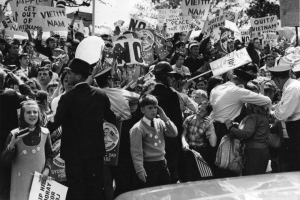 The Vietnam War…often thought of as the one America lost, was an unpopular war, as most people know. Protests were everywhere, and some young men ran away to Canada to avoid going to war. Our soldiers were hated, mocked, and protested…especially when they came home from the war. People didn’t line up at airports to welcome them home, they lined up to protest them…calling them “baby killers” and spitting on them. Although such incidents were rare, the stories were often repeated among US soldiers in Vietnam. These stories added to the soldiers’ resentment of the antiwar movement. Rather than being greeted with anger and hostility, however, most Vietnam veterans received very little reaction when they returned home. They mainly noticed that people seemed uncomfortable around them and did not want to talk about their wartime experiences. “Society as a whole was certainly unable and unwilling to receive these men with the support and understanding they needed,” Christian G Appy explains in his book Working-Class War: American Combat Soldiers and Vietnam, “The most common experiences of rejection were not explicit acts of hostility but quieter, sometimes more devastating forms of withdrawal, suspicion, and indifference.” There was no tickertape parade to welcome home the heroes…nothing!! The veterans, who were just following orders, doing their duty, were blamed for the decisions of the government to go to war. It doesn’t matter to me whether this war was unnecessary, a lost cause, or a war we should or should not have been in, the soldiers should never have been blames for it. For years after the war, the Vietnam Veterans were shunned, neglected, and ridiculed.
The Vietnam War…often thought of as the one America lost, was an unpopular war, as most people know. Protests were everywhere, and some young men ran away to Canada to avoid going to war. Our soldiers were hated, mocked, and protested…especially when they came home from the war. People didn’t line up at airports to welcome them home, they lined up to protest them…calling them “baby killers” and spitting on them. Although such incidents were rare, the stories were often repeated among US soldiers in Vietnam. These stories added to the soldiers’ resentment of the antiwar movement. Rather than being greeted with anger and hostility, however, most Vietnam veterans received very little reaction when they returned home. They mainly noticed that people seemed uncomfortable around them and did not want to talk about their wartime experiences. “Society as a whole was certainly unable and unwilling to receive these men with the support and understanding they needed,” Christian G Appy explains in his book Working-Class War: American Combat Soldiers and Vietnam, “The most common experiences of rejection were not explicit acts of hostility but quieter, sometimes more devastating forms of withdrawal, suspicion, and indifference.” There was no tickertape parade to welcome home the heroes…nothing!! The veterans, who were just following orders, doing their duty, were blamed for the decisions of the government to go to war. It doesn’t matter to me whether this war was unnecessary, a lost cause, or a war we should or should not have been in, the soldiers should never have been blames for it. For years after the war, the Vietnam Veterans were shunned, neglected, and ridiculed.
By the 1980s, however, many Americans began to change their views of Vietnam veterans. They began to see that even if the war was wrong, most of the men who fought it were just ordinary guys doing their jobs. Many 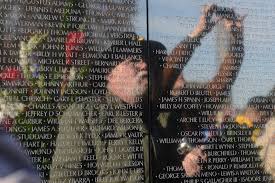 people started to feel sympathy and even gratitude toward the veterans. Soldiers who had served in Vietnam finally began receiving recognition and were honored by marching in holiday parades across the country. In 1985, Newsweek reported that “America’s Vietnam veterans, once viewed with a mixture of indifference and outright hostility by their countrymen, are now widely regarded as national heroes.” People had finally begun to understand how wrong they had been to blame the veterans for the war. Many people felt remorse for the horrible way this returning heroes were treated. Those who had this change of heart, began to do what they could to make amends. Better late than never, I guess, but in reality, no veteran should ever be treated that way.
people started to feel sympathy and even gratitude toward the veterans. Soldiers who had served in Vietnam finally began receiving recognition and were honored by marching in holiday parades across the country. In 1985, Newsweek reported that “America’s Vietnam veterans, once viewed with a mixture of indifference and outright hostility by their countrymen, are now widely regarded as national heroes.” People had finally begun to understand how wrong they had been to blame the veterans for the war. Many people felt remorse for the horrible way this returning heroes were treated. Those who had this change of heart, began to do what they could to make amends. Better late than never, I guess, but in reality, no veteran should ever be treated that way.
On November 13, 1982, near the end of a weeklong national salute to the American who fought in the Vietnam War, the Vietnam Veterans Memorial was dedicated in Washington after a march to its site by thousands of veterans of the conflict. The long-awaited memorial was a simple V-shaped black-granite wall inscribed with the names of the 57,939 Americans who died in the conflict, arranged in order of death, not rank, as was common in other memorials. The designer of the memorial was Maya Lin, a Yale University architecture student who entered a nationwide competition to create a design for the monument. Lin was born in Ohio in 1959, the daughter of Chinese immigrants. Many veterans’ groups were opposed to Lin’s winning design, which lacked a standard memorial’s heroic statues and stirring words. However, a remarkable shift in public opinion occurred 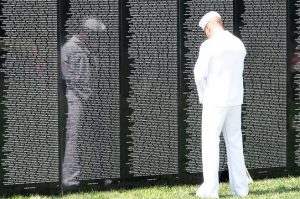 in the months after the memorial’s dedication. Veterans and families of the dead walked the black reflective wall, seeking the names of their loved ones killed in the conflict. Once the name was located, visitors often made an etching or left a private offering, from notes and flowers to dog tags and cans of beer. The Vietnam Veterans Memorial soon became one of the most visited memorials in the nation’s capital. A Smithsonian Institution director called it “a community of feelings, almost a sacred precinct,” and a veteran declared that “it’s the parade we never got.” “The Wall” drew together both those who fought and those who marched against the war and served to promote national healing a decade after the division the conflict had caused.
in the months after the memorial’s dedication. Veterans and families of the dead walked the black reflective wall, seeking the names of their loved ones killed in the conflict. Once the name was located, visitors often made an etching or left a private offering, from notes and flowers to dog tags and cans of beer. The Vietnam Veterans Memorial soon became one of the most visited memorials in the nation’s capital. A Smithsonian Institution director called it “a community of feelings, almost a sacred precinct,” and a veteran declared that “it’s the parade we never got.” “The Wall” drew together both those who fought and those who marched against the war and served to promote national healing a decade after the division the conflict had caused.
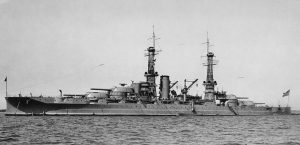 Most people know that the USS Arizona was one of the ships that was bombed when the Japanese attacked Pearl Harbor on December 7, 1941. The USS Arizona’s sinking took with it, 1,177 men…almost half of the total of 2,403 people killed at Pearl Harbor. The Arizona was one of 20 American ships and more than 300 airplanes lost that day. We know that the attack woke the sleeping giant that is the United States, and we joined World War II with the Allies to stop the tyranny that was Japan and later Germany and Italy. Most people know that the Allies were successful in World War II, and after four long years and the loss of over 400,000 lives, the war was over. There are a few facts about the USS Arizona that many people might not know, however.
Most people know that the USS Arizona was one of the ships that was bombed when the Japanese attacked Pearl Harbor on December 7, 1941. The USS Arizona’s sinking took with it, 1,177 men…almost half of the total of 2,403 people killed at Pearl Harbor. The Arizona was one of 20 American ships and more than 300 airplanes lost that day. We know that the attack woke the sleeping giant that is the United States, and we joined World War II with the Allies to stop the tyranny that was Japan and later Germany and Italy. Most people know that the Allies were successful in World War II, and after four long years and the loss of over 400,000 lives, the war was over. There are a few facts about the USS Arizona that many people might not know, however.
Twenty three sets of brothers died aboard USS Arizona. In all there were 37 confirmed pairs or trios of brothers assigned to the ship. Of the 77 men in those sets, 62 were killed. Only one full set of brothers survived. Kenneth and Russell Warriner survived because Kenneth was away at flight school in San Diego, and Russell, while badly wounded, lived. Also on board were father and son, Thomas Free and his son William who served and were killed aboard the Arizona that day. While no regulation exists, US officials discouraged siblings serving on the same ship after the Pearl Harbor attack. In addition to these men who died, the USS Arizona’s entire band, all 21 members, known as US Navy Band Unit (NBU) 22, were lost in the attack. Most of its members were up on deck preparing to play music for the daily flag raising ceremony when the attack began. They instantly moved to man their battle positions beneath the ship’s gun turret. It was the only time in American history that an entire military band died in action. In the years following the attack, and following the decision to leave the dead in the USS Arizona, it was decided that a memorial should be placed there. That is a known fact, but what I didn’t know was that in March 1961, Elvis Presley, who had recently finished a two year stint in the US Army, performed a benefit concert at 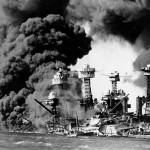
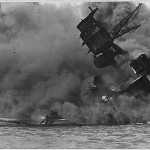 Pearl Harbor’s Block Arena that raised over $50,000. That was more than 10 percent of the USS Arizona Memorial’s final cost. The monument was officially dedicated on May 30, 1962.
Pearl Harbor’s Block Arena that raised over $50,000. That was more than 10 percent of the USS Arizona Memorial’s final cost. The monument was officially dedicated on May 30, 1962.
One of the most surprising facts about the Arizona, however, is related to the fuel. The day before the Pearl Harbor attack, the Arizona had taken on a full load of fuel…nearly 1.5 million gallons, because it was set to make a trip to the mainland later that month. When the Japanese bombers attacked, that fuel played a major part in the explosions and raging fire that followed the bombing. After the fires were put out, there were 500,000 gallons of fuel left in the ship. Now, 75 years later, the Arizona continues to spill up to 9 quarts of oil into the harbor each day. In the mid-1990s, concerns for the environment led the National Park Service to commission a series of site studies to determine the long term effects of the oil leakage. Some scientists have warned of a possible “catastrophic” eruption of oil from the wreckage, which they believe would cause extensive damage to the Hawaiian shoreline and disrupt US naval functions in the area. They continue to monitor the deterioration of the wreck site but are reluctant to perform extensive repairs or modifications due to the Arizona’s role as a “war grave.” In fact, the oil that often coats the surface of the water surrounding the ship has added an emotional gravity for many who visit the memorial and is sometimes referred to as the “tears of the Arizona” or “black tears.”
As surprising as that is, there is still one more fact that many people didn’t know. The bonds between the crewmembers of Arizona have lasted far beyond the loss of the ship on December 7, 1941. Since 1982, the US Navy has allowed survivors of USS Arizona to be interred in the ship’s wreckage upon their deaths. After a full military funeral at the Arizona memorial, the cremated remains are placed in an urn and then deposited by divers beneath one of the Arizona’s gun turrets. More than 30 Arizona crewmen who survived Pearl Harbor  have chosen the ship as their final resting place. Crewmembers who served on the ship prior to the attack may have their ashes scattered above the wreck site, and those who served on other vessels stationed at Pearl Harbor on December 7, 1941, may have their ashes scattered above their former ships. As of November 2011, only 18 of the 355 crewmen who survived the bombing of USS Arizona are known to be alive. I knew that the Pearl Harbor attack had a deep impact on the lives of the survivors, but I guess I didn’t fully understand that it was a life changing event, and it would never really leave them.
have chosen the ship as their final resting place. Crewmembers who served on the ship prior to the attack may have their ashes scattered above the wreck site, and those who served on other vessels stationed at Pearl Harbor on December 7, 1941, may have their ashes scattered above their former ships. As of November 2011, only 18 of the 355 crewmen who survived the bombing of USS Arizona are known to be alive. I knew that the Pearl Harbor attack had a deep impact on the lives of the survivors, but I guess I didn’t fully understand that it was a life changing event, and it would never really leave them.
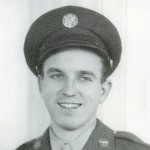
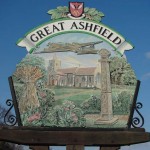 I have been reading through some of my dad’s letters home to his family from World War II, and I find myself thinking about the secrets that had to be kept. During wartime, locations and mission cannot be spoken of, because it might, or more likely would, compromise the mission and the men involved. I’m sure it was hard for the men, when they couldn’t tell their families where they were, other than the country they were in. Still, they knew that what they were doing was bigger than they were, and they were a part of something greater than their own needs…and there were spies everywhere. Letters and calls could be intercepted, and if they were, missions could fail, and lives would be lost.
I have been reading through some of my dad’s letters home to his family from World War II, and I find myself thinking about the secrets that had to be kept. During wartime, locations and mission cannot be spoken of, because it might, or more likely would, compromise the mission and the men involved. I’m sure it was hard for the men, when they couldn’t tell their families where they were, other than the country they were in. Still, they knew that what they were doing was bigger than they were, and they were a part of something greater than their own needs…and there were spies everywhere. Letters and calls could be intercepted, and if they were, missions could fail, and lives would be lost.
Mixed in with the necessity of secrecy, was the need to let family know you were ok. Remember, that most of these men were very young, and many had never been away from home before. Now on that first trip away from home, there are people trying to kill them. My dad had lived away from home before going into the Army Air Forces, but he was very loving and loyal toward his family. It was very important to him that they not worry about him. Dad was also an honorable man. He was a patriot. He would never do anything that would dishonor or put in danger his country, or the men he served with. I can imagine that these men all found themselves in a tough place at that time in the world’s history, but they did what they had to do, because they were a part of something greater than their own feelings, or those of their families.
My dad was the top turret gunner and the flight engineer on a B17 Bomber, stationed at Great Ashfield, Suffolk, England. It was a base in the middle of the English countryside, surrounded by civilian towns and farms. These people knew all too well how important the United States military presence was to their safety, and indeed their very lives. If one of those men had revealed information about their upcoming missions, the entire area could have been attacked and destroyed. So important was their mission over there, and so grateful were the people of that area, that memorials were erected to remember…forever, the sacrifice made by the brave men of the 385th Heavy Bombardment Group, U.S. Army Air Forces. The memorials were placed so that generation, and future generations would remember the sacrifices made to save their lives by men who were a part of something greater than their own lives…to protect the lives of people they didn’t 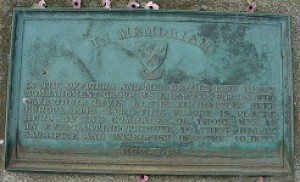 even know. That is what my dad was a part of when he was barely more than a teenager.
even know. That is what my dad was a part of when he was barely more than a teenager.
Those years changed who my dad was, just like they changed the lives of all the men who lived through that turbulent time in the history of the world. Those were hard times for everyone, and yet my dad and the other young men he served with, played their very important part with dignity and honor, placing the lives of innocent civilians ahead of their own lives, because they were a part of something greater.
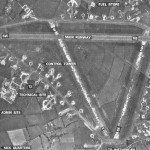
 We look back on the wars of the past and where we fought them, and no matter how hard we try to cover up those places…to erase the past as it were, the earth remembers. My dad was stationed at Great Ashfield in Suffolk, England during World War II. That was a very busy place in those days, and the people who lived there during the war were grateful to the men of the 8th Air Force. Great Ashfield was largely a B-17 base, and the towns around the base were fairly safe, because the 8th Air Force was very capable and much feared. Their very presence made people feel safer, in a time when feeling safe was…well, a precious commodity.
We look back on the wars of the past and where we fought them, and no matter how hard we try to cover up those places…to erase the past as it were, the earth remembers. My dad was stationed at Great Ashfield in Suffolk, England during World War II. That was a very busy place in those days, and the people who lived there during the war were grateful to the men of the 8th Air Force. Great Ashfield was largely a B-17 base, and the towns around the base were fairly safe, because the 8th Air Force was very capable and much feared. Their very presence made people feel safer, in a time when feeling safe was…well, a precious commodity.
The area where the air base was at that time is still marked by the memorials to the men who kept them safe during that awful time. A beautiful sign decorated with a B-17 Bomber still marks the Great Ashfield Gate. It is a tribute to those great men who fought and died to protect the lives of people they didn’t even know. Fighting for people they don’t even know is after all the core of every person in the military. It is maybe something we civilians don’t really understand…until someone steps up and does it for us. That is how those people felt, and why they continue to honor those great men to this day…the earth remembers.
I looked Great Ashfield up on Google Earth. We are blessed today to have the ability to take a virtual tour of places we might never have seen otherwise. When I first looked it up, while I was making a book of my dad’s war days for my dad and my Uncle Bill, all you could see was from the air, and while the air base is no longer an air base, you can still see exactly where it was, and a small part of it is still used for small planes today…the earth remembers.
Tonight as I write this I looked it up again, and now you can actually get right down to the edge of the base, as if you were standing right there. Google Earth now takes those street views, and Great Ashfield is one of them they have done. As I looked at the edge of the base, tears came up in my eyes, and I got a lump in my throat, because I knew that this was a place where my dad had walked…his old stomping grounds, as the old saying goes. 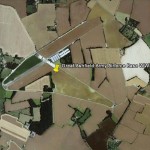
 Dad had told me about three Poplar trees at the end of the runway, and all the men knew that when you saw those three Poplar trees, you were safe. The enemy wouldn’t dare follow you here. As I stood there at the edge of the base, looking around the area, I was almost dumbfounded when those same three Poplar trees came into view…just like in the pictures I had found. They are still there to this day, as a reminder, at least to me that my dad always made it safely home…the earth remembers, and so do I.
Dad had told me about three Poplar trees at the end of the runway, and all the men knew that when you saw those three Poplar trees, you were safe. The enemy wouldn’t dare follow you here. As I stood there at the edge of the base, looking around the area, I was almost dumbfounded when those same three Poplar trees came into view…just like in the pictures I had found. They are still there to this day, as a reminder, at least to me that my dad always made it safely home…the earth remembers, and so do I.

